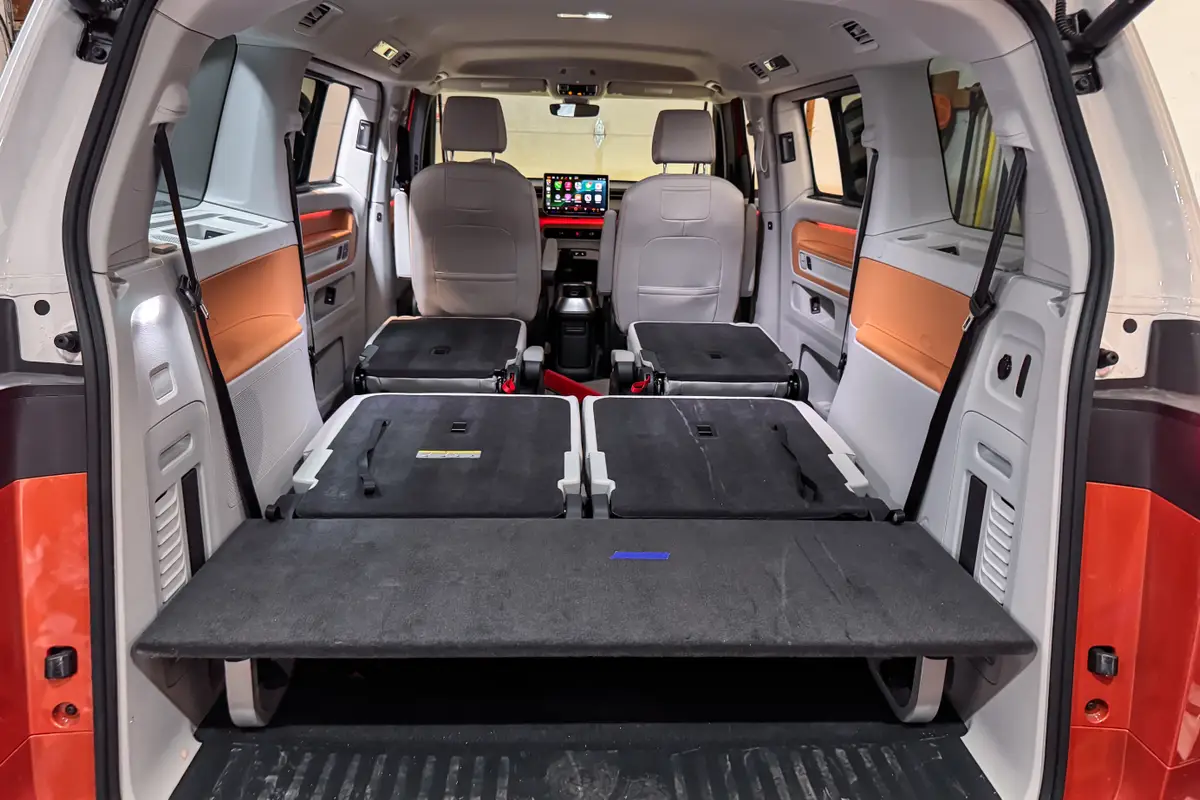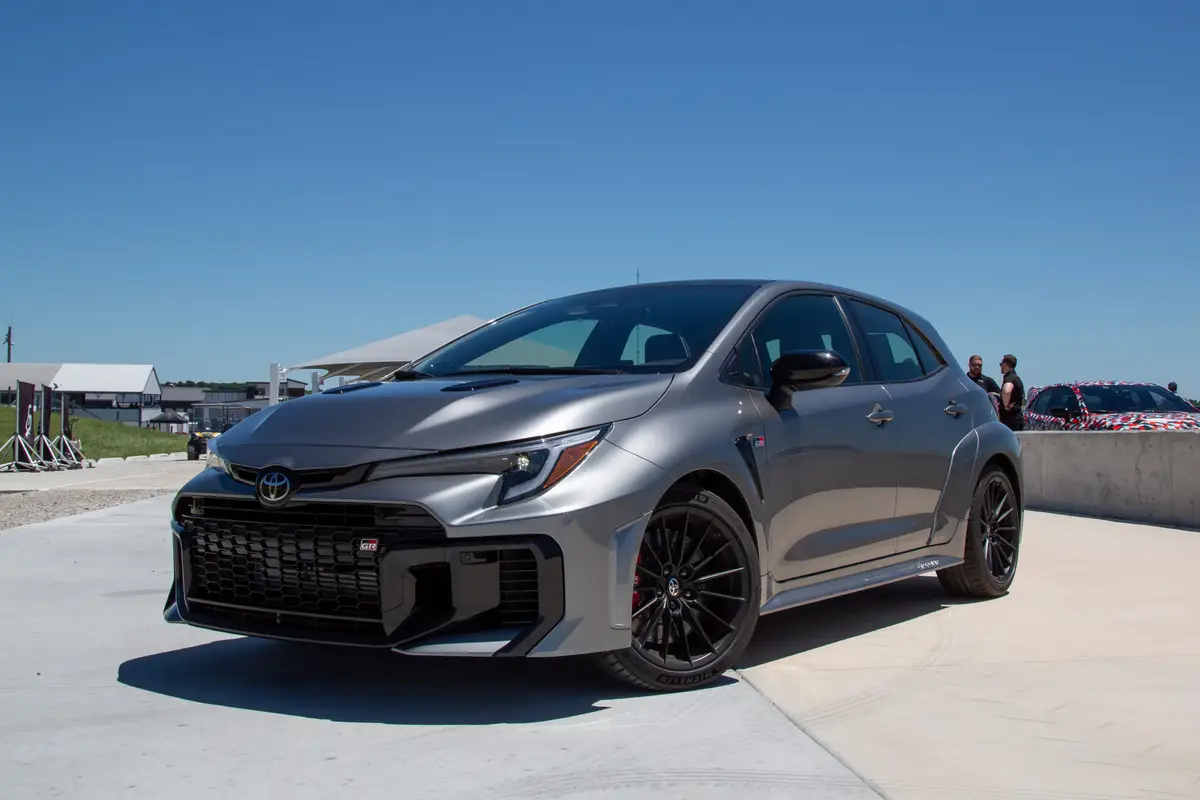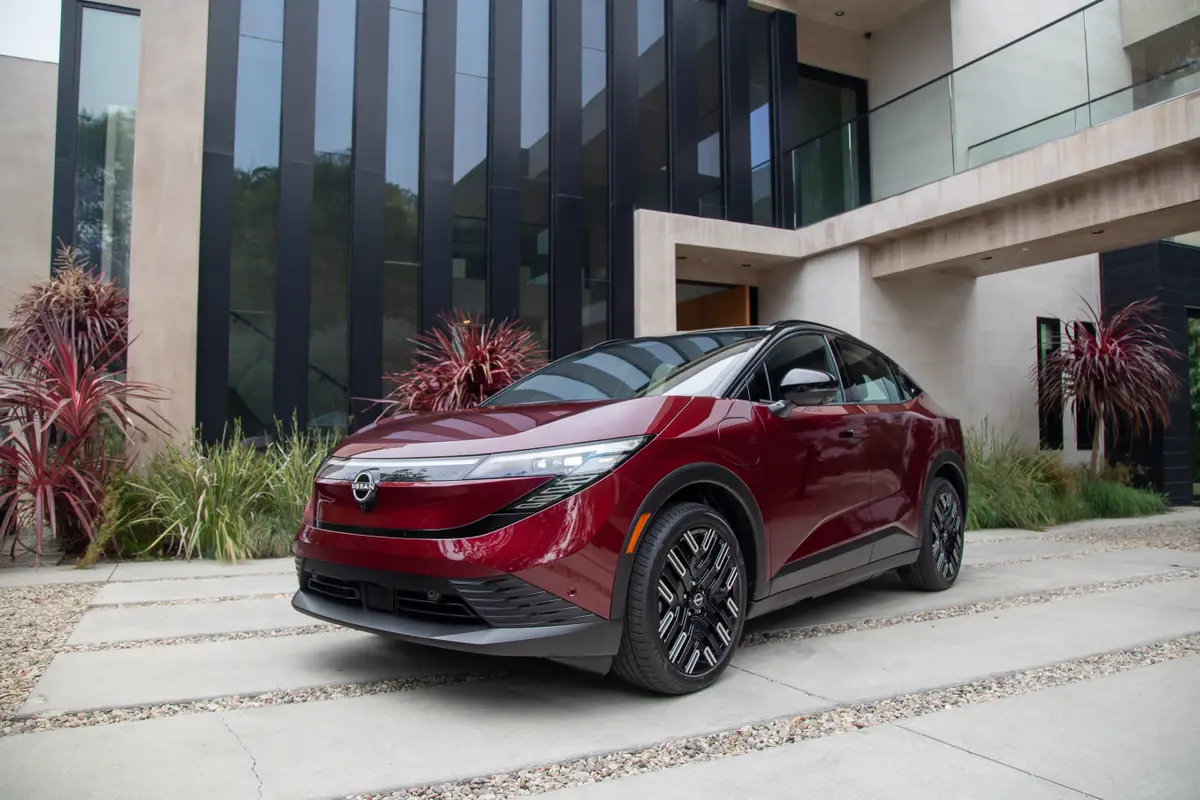10 Things to Know About the 2016 Toyota Mirai

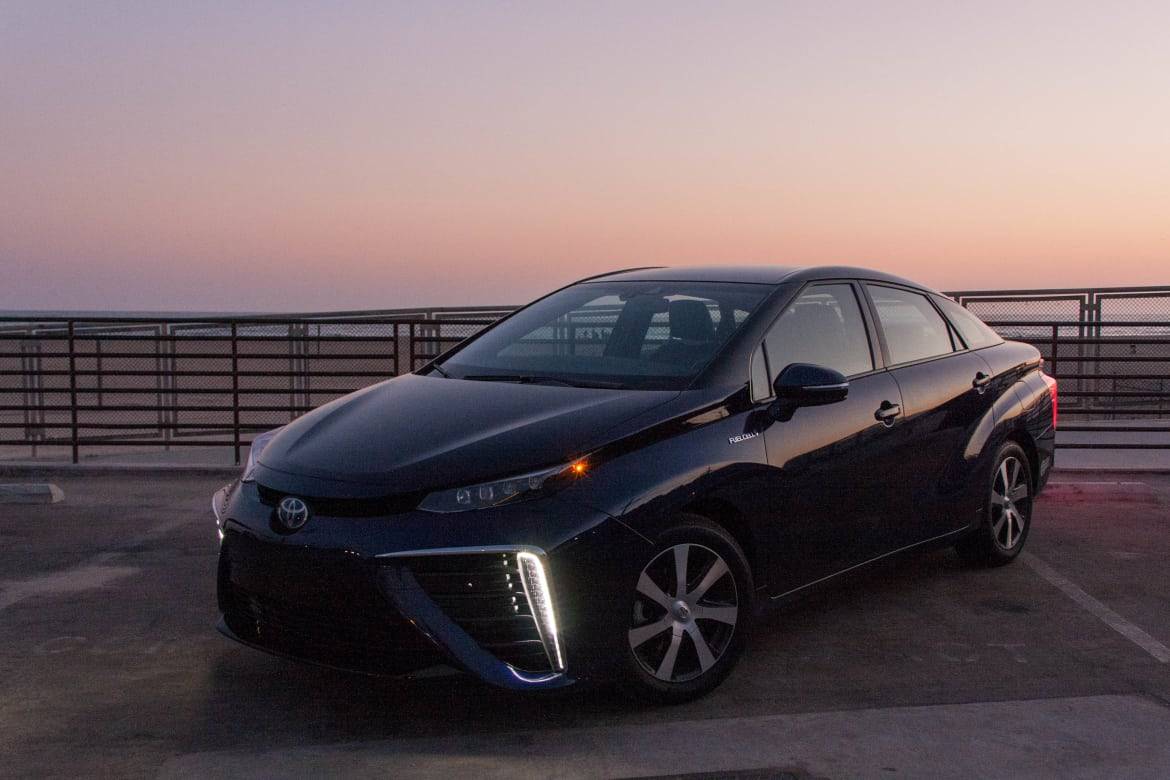
CARS.COM — As a reviewer, I drive a lot of cars, but nothing I’ve taken home for a test has gotten more attention from my friends and family, or more stares and questions from strangers, than the 2016 Toyota Mirai, the automaker’s fuel-cell car.
Related: 2016 Toyota Mirai: First Look
I spent a week with the car and my passengers had plenty of questions about the four-seat, hydrogen-powered sedan. Here are 10 things I learned:
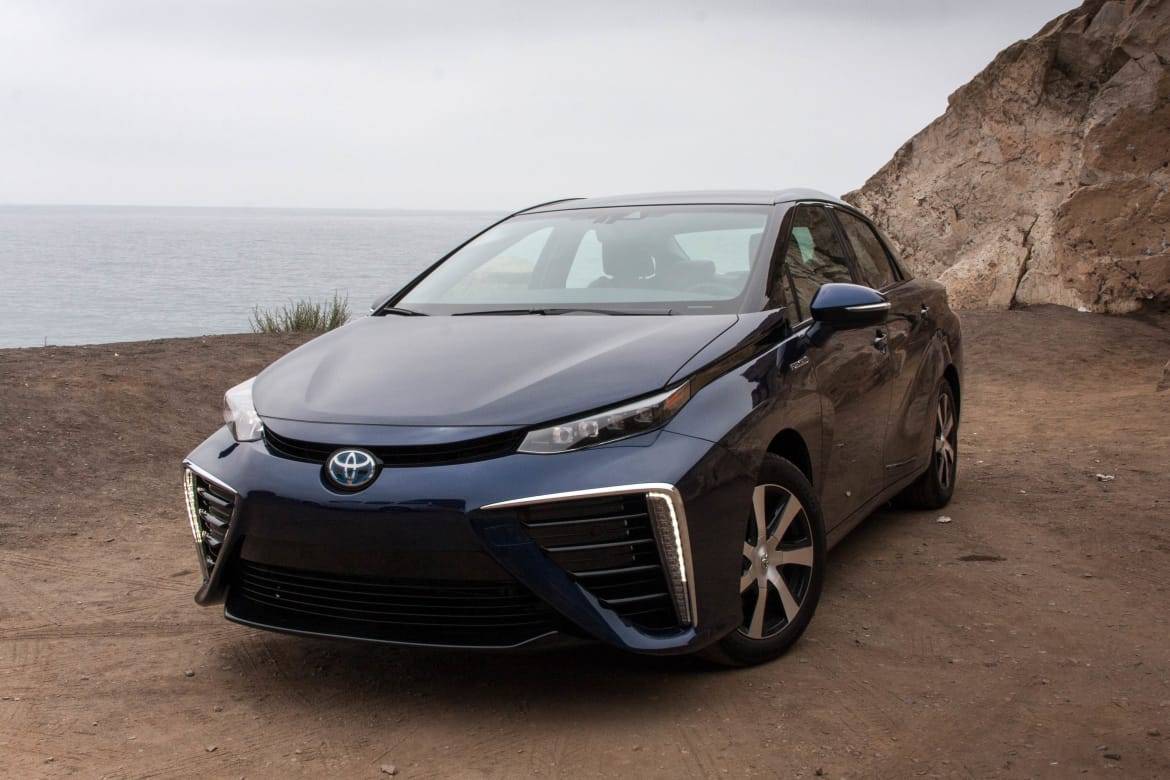
1. It Turns More Heads Than a Tesla
Teslas are ubiquitous where I live in Southern California, but the Mirai remains a bit of a unicorn; Toyota has only sold about 500 of them. What also helps it stand out is its styling. The four-seat sedan has one of the most unique and polarizing looks of any car on the road today.
I understand the rationale — aerodynamics certainly plays a part in its angular, funky look, but there’s also value in making it distinct. Toyota wants to boost interest in the vehicle and hydrogen in general, so making it look like a regular sedan would have been a missed opportunity.
2. It Drives Like a Mix Between a Hybrid and an Electric Vehicle
Since all of the power runs through the electric motor to the front wheels, takeoff is instantaneous, similar to the responsiveness of an electric car. The 247 pounds-feet of torque kicks in immediately, so the Mirai feels rather quick from zero to 30 mph. However, at highway speeds, the 151-horsepower electric motor loses steam and feels more muted. It’s much better than an econobox, but passing still requires you to lean on the pedal pretty hard.
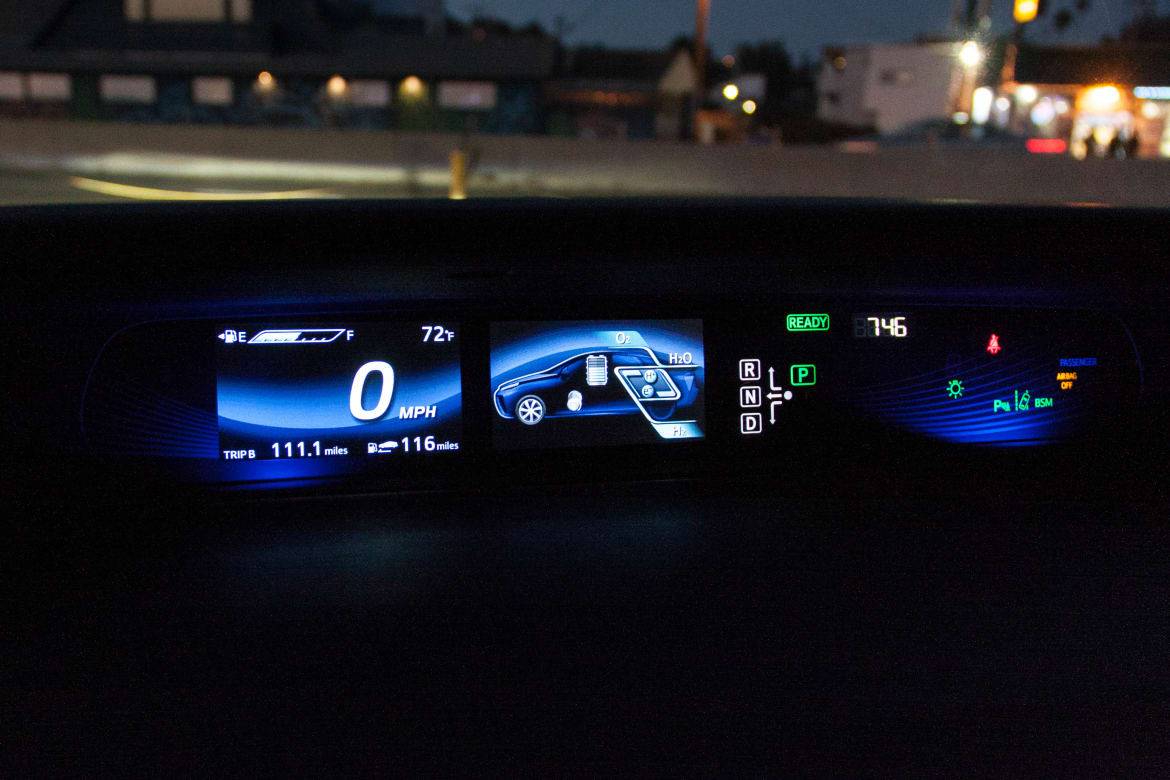
Toyota also included elements from its hybrid vehicles in the Mirai, including a battery that helps with starts like it would in a gas-electric hybrid and gets recharged by regenerative braking. In fact, the electric motor, power control unit and the battery itself are all borrowed from other Toyota or Lexus vehicles. It makes sense that in some scenarios, it drives similarly to a Prius — albeit one with a much quieter, more upscale interior.
3. It Takes Several Minutes to Fill Up
To fill up from one-quarter tank back to full took 6.5 minutes from start to finish of the fueling process. That’s a bit more time than it takes to fill up with regular gas but much faster even than supercharging for an electric vehicle. As long as a station is handy, a hydrogen car is much closer to a gas vehicle than an electric one in terms of refueling.
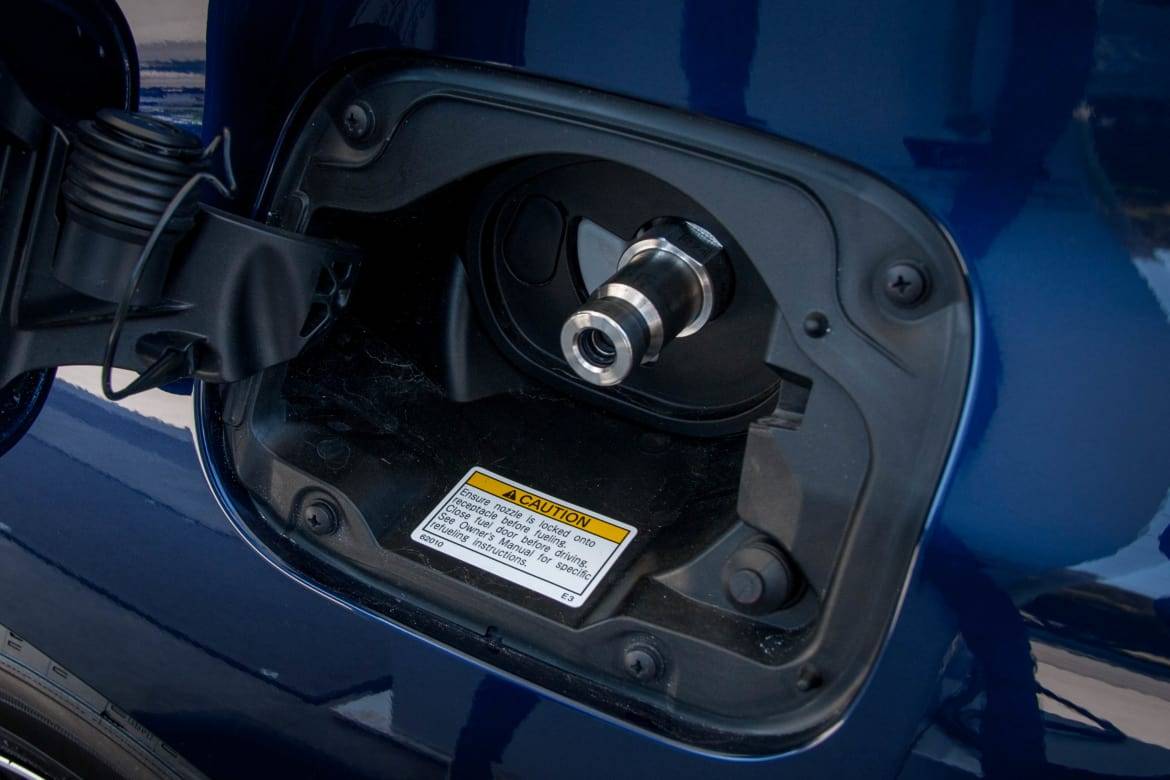
4. Hydrogen Is Fairly Affordable
Hydrogen is sold by the kilogram and the station I filled up at was priced at $16.63 per kilogram. The Mirai’s tanks hold about five kilograms. At that point, I had driven 195.3 miles in the car starting from a full tank and it was about three-quarters empty. To fill up approximately three-quarters of the tank was 3.819 kilograms of hydrogen, which cost $63.51. That put the cost per mile at around $0.33.
Bonus: For those who buy or lease a Mirai, Toyota will pay for three years or up to $15,000 maximum of hydrogen fill-ups (whichever comes first). The automaker includes a payment card, so there’s no need to submit receipts for reimbursement.
Given our $0.33-per-mile estimate, that translates to around 15,152 miles of driving per year without having to pay for fuel.
5. Hydrogen Range Anxiety Is Real
Nationwide, hydrogen stations aren’t plentiful. Coverage in Los Angeles is pretty good, however. There’s no more than 20 miles or so between stations if you stay in the greater Los Angeles or Orange County area. There’s also a station in Santa Barbara and one about halfway up Interstate 5 that makes driving to the Bay Area possible.
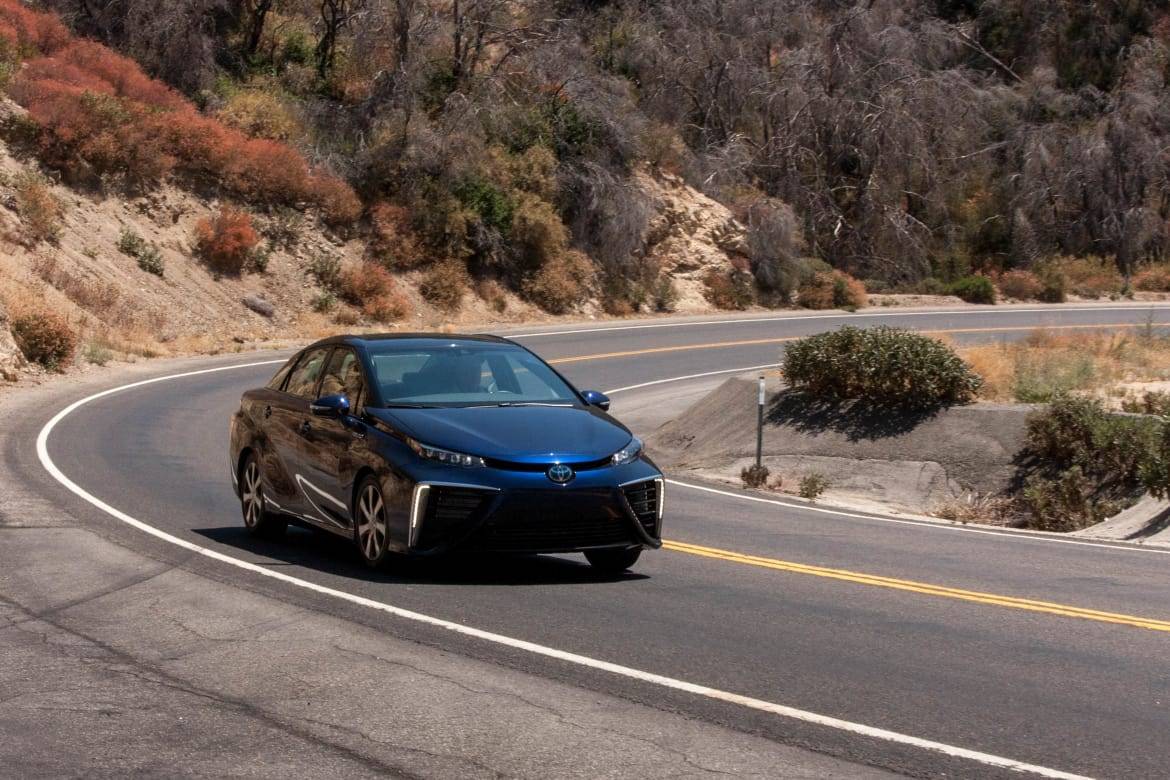
I was never worried about running out of hydrogen, but driving the Mirai does require a bit of extra planning. I was headed to the Angeles Crest, about 30 miles away, to test out the Mirai’s dynamics and it had a third of a tank left. That required me to check if there was a station nearby for filling up before heading into the curvy mountain roads. If you live in California, the California Fuel Cell Partnership provides a useful website that allows you to see where hydrogen stations are and the status of their pumps.
Checking the status of the pumps is important. There are two types of hydrogen pumps: H35 and H70. The numbers refer to the pressure of each pump: H35s will only fill the Mirai halfway, but an H70 can fill it completely. With a bit of homework, my chances of getting stranded diminished.
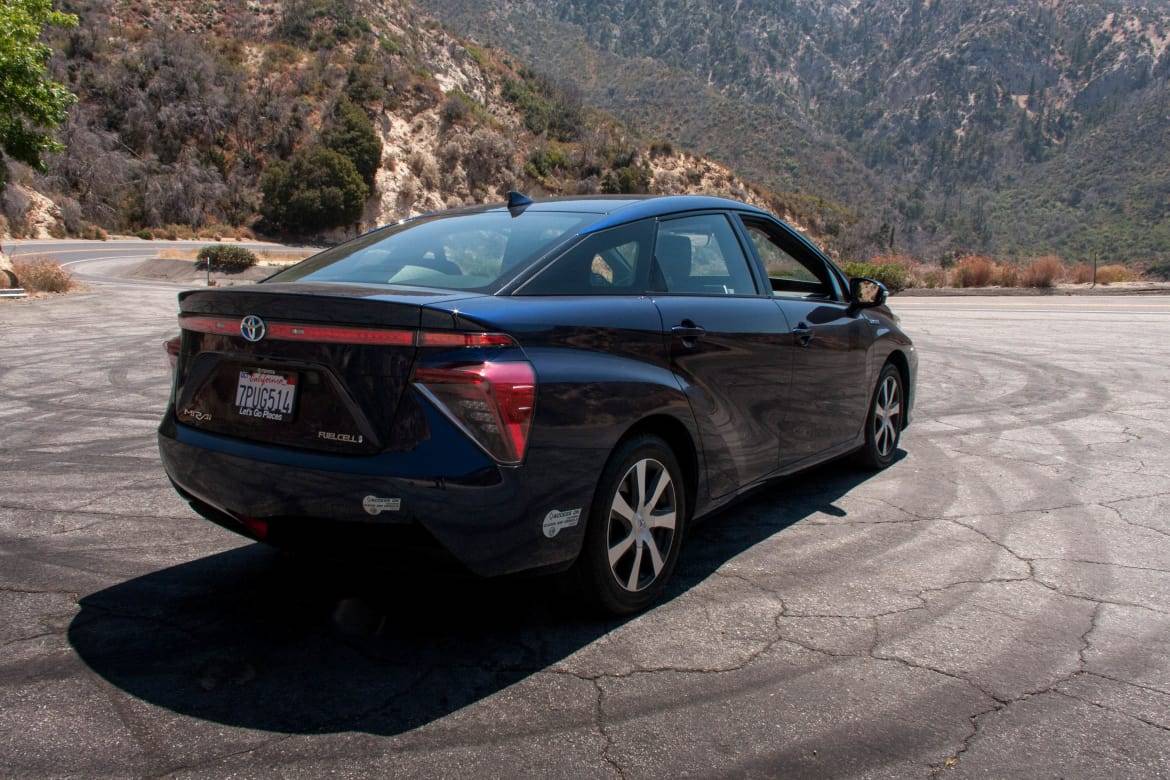
6. It Has Impressive Range
The EPA estimates the Mirai can travel 312 miles on a full tank, but after topping it off a couple of times, the highest range the computer would calculate was 237 miles. Toyota said that number is conservative and the computer’s calculation factors in past driving behavior, so having a heavy foot would lower the range estimate in the future. But even if it that’s the case, it’s still a long way off from the EPA’s figure.
After the midweek refill with the starting range at 237 miles according to the computer, I drove another 137 miles. The ending range estimate was 103 miles. This matches the Mirai with the upper tier of electric vehicles in terms of range.
7. It Emits H2O
Water is the only emissions byproduct. Most of the water produced is in the form of gas or vapor and it immediately exits the Mirai via a tailpipe located on the driver’s side under the rear bumper. The pipe points straight down so bicycle or motorcycle riders behind the Mirai are not getting sprayed with a fine mist at speed.
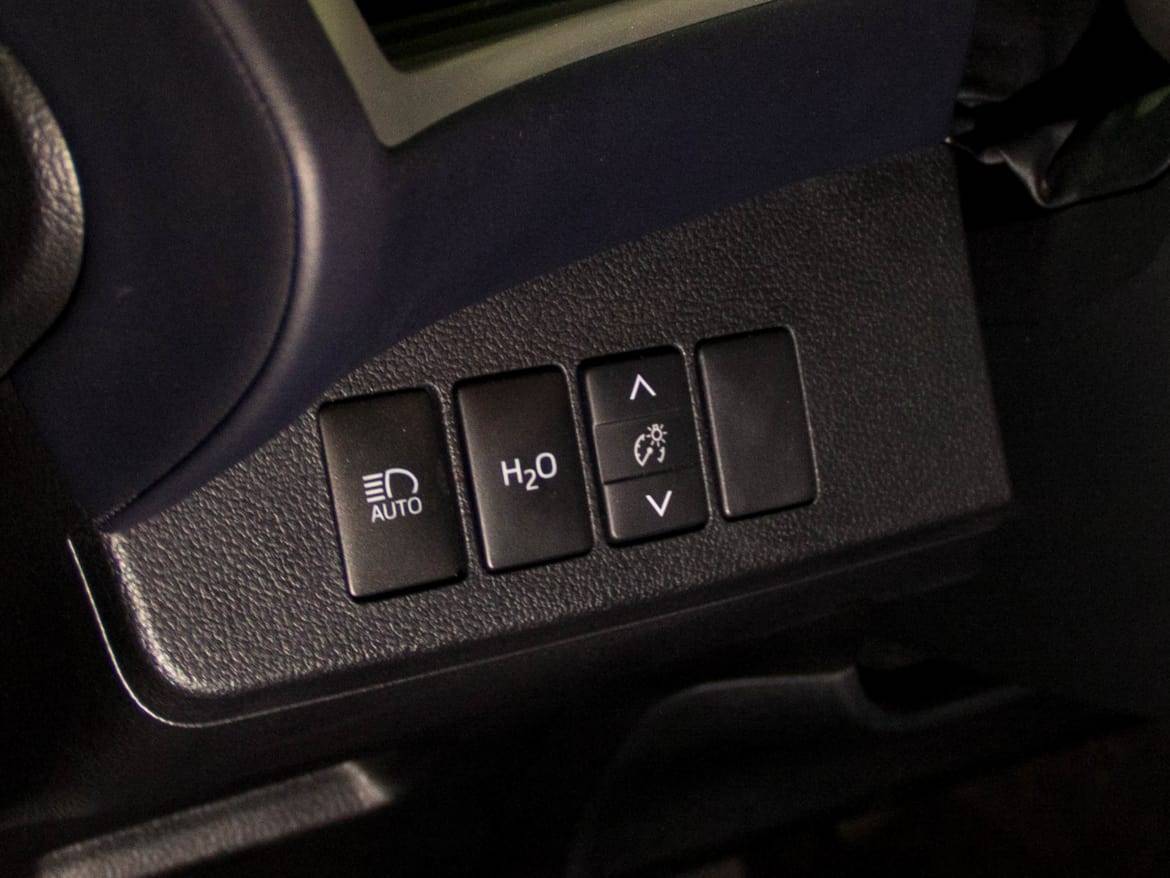
There isn’t a tank to store the water that is made, but some collects in the bend of the pipe over the rear axle. There is a small “H2O” button to the left of the steering wheel which activates an air compressor that blows the excess water out of the pipe — this allows drivers to dump the water on the street or driveway instead of the garage. Toyota says that the amount of water produced is about 0.02 gallons per mile. I actually managed to collect some of the water coming out of the tailpipe after pressing the button.
8. Don’t Drink the Water!
I asked Toyota representatives if it was safe to drink the water. They said that the water released from the energy-making process in the fuel cell is pure distilled water and clean, but after it passes through the dirty tailpipe, drinking it wouldn’t be the best idea. So I deferred to their (better) judgment.
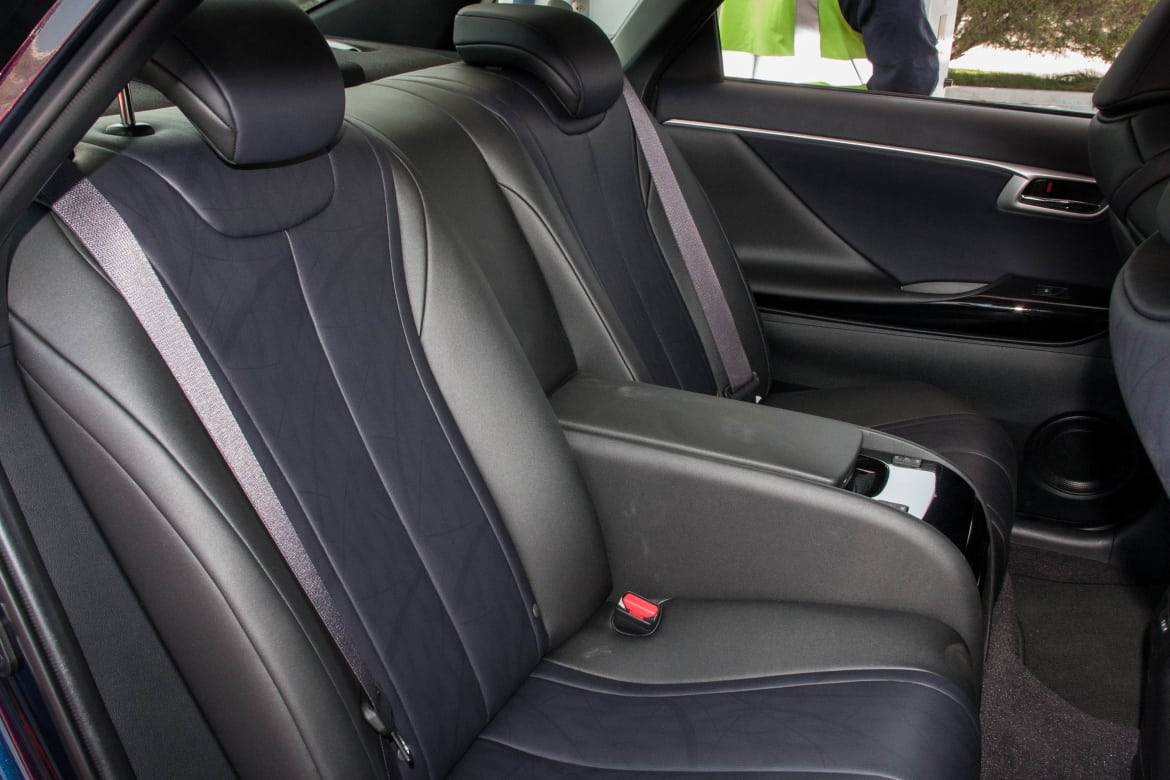
9. It’s Unlikely to Blow Up in an Accident
The most common question I got from friends I carried around in the Mirai was, Will this thing blow up if we get hit? A valid question given the two big hydrogen tanks behind the rear seats. Two of the words that are most associated with hydrogen — bomb and Hindenburg — were both tossed around quite liberally from backseat passengers.
The short answer is no; in the event of a high-speed crash that could compromise the system, the tanks are shut off immediately. The tanks themselves are reinforced with carbon fiber, which Toyota tested by shooting them with high-caliber bullets. Also, all hydrogen-related parts are located outside the cabin, so nothing gets inside.
In some ways, a hydrogen tank being pierced is better than a gas tank in the same situation: The hydrogen gas escapes and dissipates quickly into the air, but gasoline will pool underneath the car and create a longer-lasting hazard. Should the hydrogen gas ignite, it won’t explode; rather, it will flare quickly which uses up all of the hydrogen in the area.
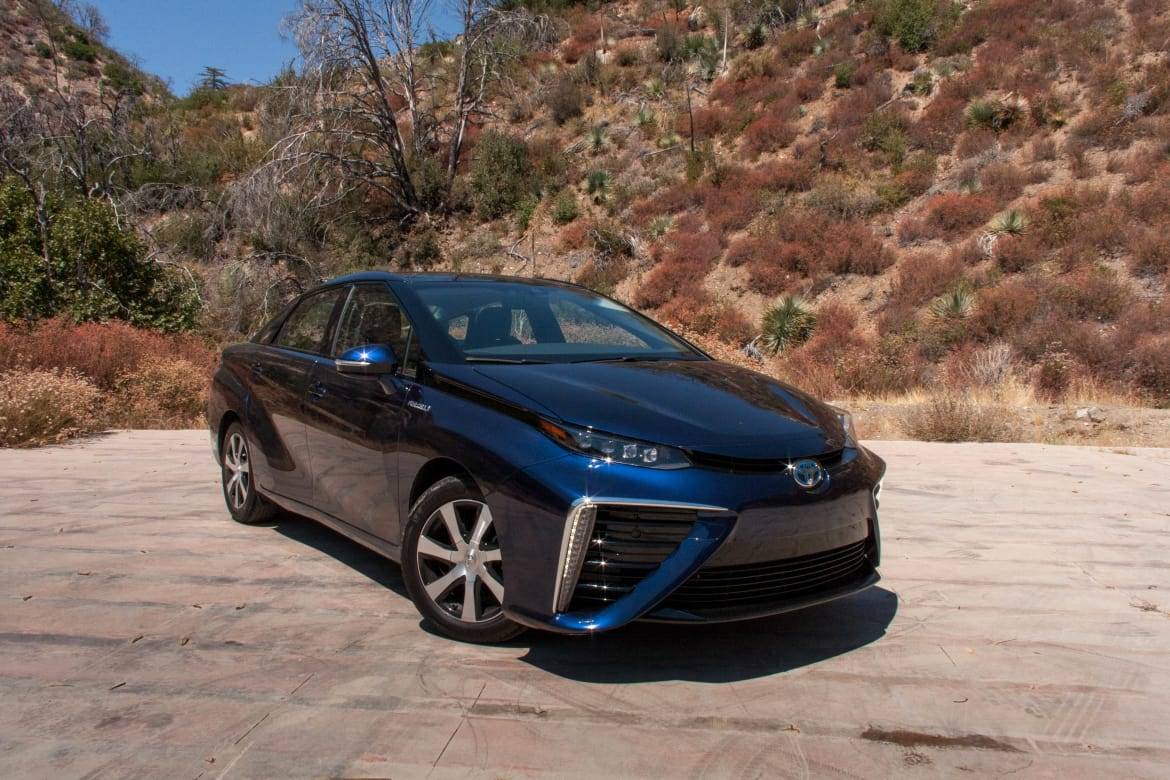
10. I Wouldn’t Buy One
I enjoyed my week in the Mirai, and there’s something appealing about putting miles on a car and the only byproduct being water, but would I buy one?
After a week of living with it, I considered it more than I thought I would. Ultimately, the answer is no. As a proof of concept, the Mirai is great; the fueling process is pretty painless and I felt like I was driving something from the future. Cost-wise, however, it’s an interesting value proposition: The Mirai starts at $58,365 (including destination) before applicable federal and state rebates. The most current federal rebates offer $8,000 back and the state of California previously offered a $5,000 rebate as well, though that program is currently awaiting more funding. Toyota will also offer a lease deal on the Mirai with pretty favorable terms: $499 per month for 36 months, with $3,649 due at signing for qualified car buyers. Add in Toyota’s willingness to foot the bill for three years of hydrogen and it starts to sound even sweeter.
But there are still similar anxieties that you’d have with an electric vehicle even though the refueling process is much quicker. It would make a lot of sense as someone’s second car or something to commute in exclusively. But as someone who loves to take longer trips in a car, the lack of a nationwide hydrogen infrastructure would prevent meandering road trips. Although I guess if you did get stuck in the desert, you would have some water to drink — just make sure to clean the tailpipe first.
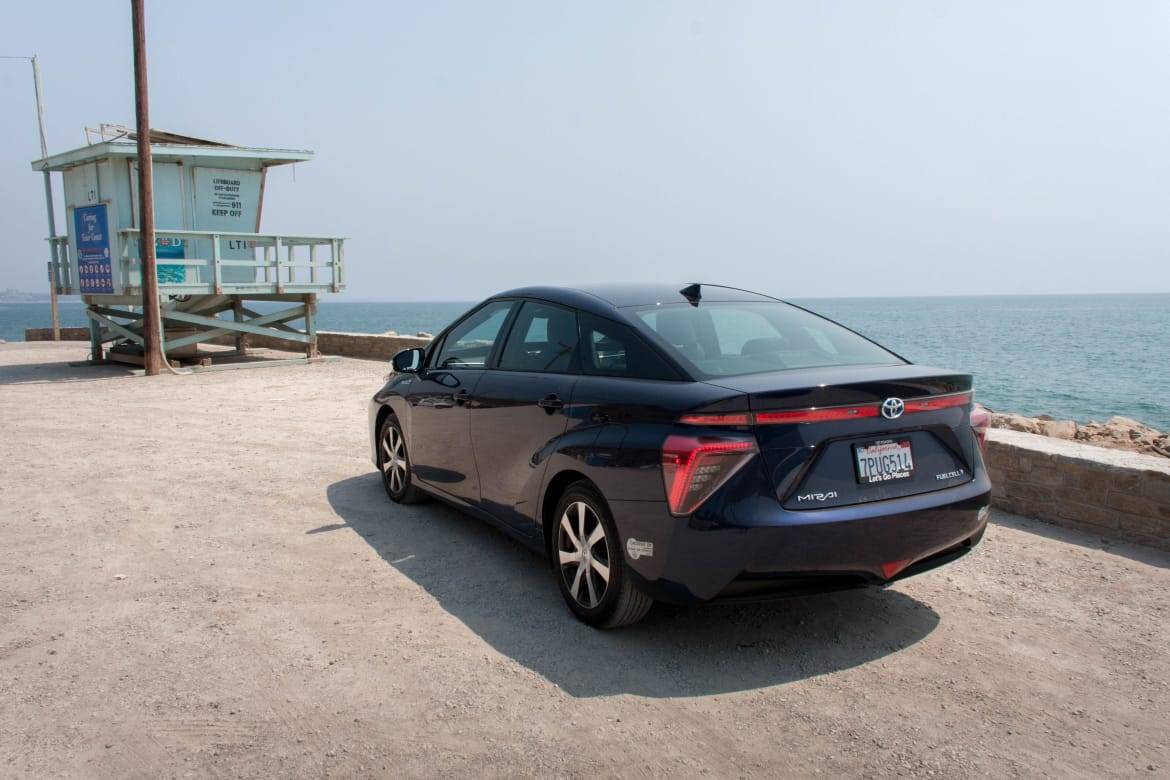

Former L.A. Bureau Chief Brian Wong is a California native with a soft spot for convertibles and free parking.
Featured stories
